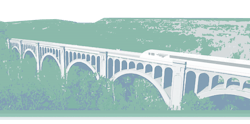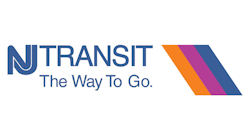Amtrak and PNRRA release findings of two-year analysis examining potential for rail service between Scranton and New York
Amtrak and the Pennsylvania Northeast Regional Railroad Authority (PNRRA) have released the findings of a two-year analysis examining the potential for rail service between Scranton and New York. The study included operations planning to develop a sample schedule, ridership estimates, economic impacts and an infrastructure assessment for the Pennsylvania segment. The infrastructure assessment estimates costs to upgrade track to accommodate passenger trains along 60 route miles owned by PNRRA between Scranton and the Delaware Water Gap.
“Passenger rail service in and out of Scranton was discontinued in 1970, only one year before Amtrak was created,” said Amtrak CEO Stephen Gardner. “Restoring and expanding this corridor with daily multi-frequency service would dramatically boost mobility and economic development for residents of Scranton and Northeastern Pennsylvania, New Jersey, New York and the broader northeast region.”
The route’s outlined vision plan includes:
- Three roundtrips per day, with an automobile competitive travel time of approximately two hours and 50 minutes between New York and Scranton.
- Trains traveling at a maximum speed of up to 110 mph (on the Lackawanna Cutoff segment) and transporting an estimated 470,000 riders per year.
- Stations located in Scranton, Mt. Pocono, East Stroudsburg, Blairstown, Dover, Morristown, Montclair, Newark and New York City.
“This study reinforces what we have advocated for decades that rail passenger service to this region is a huge economic positive,” said PNRRA President Larry Malski. “The study’s release is extremely timely with last year’s passage of the Infrastructure Investment and Jobs Act that for the first time makes available federal funding for developing Scranton service, especially restoring the Lackawanna Cutoff and upgrading PNRRA trackage.”
“This is tremendous news for our region and a boost to our effort to achieve this game-changing rail corridor. Amtrak’s study confirms what we have believed here all along – ridership will be not just sufficient, but high for the corridor,” said Scranton Mayor Paige Cognetti. “We are pleased Amtrak has identified this corridor to have dining and beverage service and a route time under three hours. We are grateful to Amtrak and our own PNRRA for their thoughtful and diligent work.”
“Restoring rail service to northeast Pennsylvania will help grow our economy and provide a new transportation corridor that’s been shut off for too long. Pennsylvania invests significant resources in passenger rail throughout the Commonwealth, and we look forward to expanding services into new corridors and bringing alternative transportation options to thousands of Pennsylvanians,” said Acting Pennsylvania Department of Transportation (PennDOT) Secretary Mike Carroll. “I commend our team and the stakeholders involved for their work in preparing this project application.”
“NJ Transit is pleased to continue working with Amtrak, PennDOT and our other partners as we continue to determine the infrastructure and other requirements that would be needed to allow for any future service expansion,” said New Jersey Transit (NJ Transit) President and CEO Kevin S. Corbett.
Service could potentially begin as early as 2028, pending completion of design work and construction by stakeholders, including PennDOT, NJ Transit and PNRRA with support and funding from the federal government. The proposed service would utilize upgraded existing tracks in Pennsylvania between Scranton and the Delaware Water Gap, 20 miles of restored tracks on the “Lackawanna Cutoff” between Delaware Water Gap and Andover, N.J., and existing tracks owned and operated by NJ Transit and Amtrak between Andover and New York City.
Additionally, the project would generate significant annual economic benefits:
- $84 million in economic activity
- $20 million in benefits to passengers
- $7 million in society benefits
The next steps in the corridor design to implementation process include completing the Federal Corridor ID application by March 27 for funding to:
- Finalize the service development plan and secure government agreements
- Confirm compliance with National Environmental Policy Act
- Complete preliminary engineering activities
- Completing final design
- Securing funding (the Federal government could provide up to 80 percent of construction funding; the non-Federal share is 20 percent)
- Completing subsequent construction projects and acquiring trains
This newly released report estimates that track improvements on the PNRRA owned segment will cost between $100 million and $175 million while the acquisition of trains is estimated to cost approximately between $70 million and 90 million. The two items are anticipated to be about 30 to 45 percent of the total project cost.
More design work will estimate the total cost of re-establishing Scranton – New York City passenger rail service, including fully restoring the Lackawanna Cutoff, building stations and creating an equipment service facility. Acceptance of the project into the Corridor ID program would accelerate the process needed to restore this important transportation connection.





